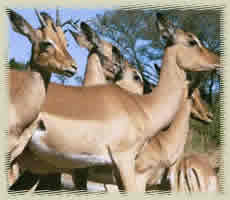"Africa in Philippines."
"Bastion of endangered wildlife."
These were just few descriptions this island have.
The Calauit Game Preserve and Wildlife Sanctuary (CGPWS) is the Philippines major conservation showcase for wildlife habitat holding the single distinction as the first successful wildlife translocation experiment in Asia. It has evolved to becoming a home of important Philippine endemic and exotic wildlife from Africa
Its creation (sanctuary) by then President Marcos was through an issuance of Presidential Proclamation No. 1578 on August 31, 1976. It has total land area of 3,400 hectares with low-lying island in the Calamian group, north of Palawan; it is a short distance from the much larger island of Busuanga. The natural vegetation is lowland forest and mangroves along the coast. Much of the forest has now been replaced by plantations, secondary growth and open grassland. Marine habitat is said to have been haven to the dugong, sea turtles, giant clams, coral reefs and a sanctuary for commercial fish species as well. 

Prior to its declaration as wildlife sanctuary, about 100 families were already settled in the island. During the issuance of the Proclamation, Calauit was a settlement of more than 200 families whose primary livelihood was fishing. But there were wild “gossip” as to the reason for its establishment – the then dictator, Marcos, just wanted to have an exclusive hunting area safari style.
The Project started in 1977 with the introduction of eight species on an experimental basis to see whether the movement of African wildlife from a subtropical to tropical habitat would succeed. The exodus of 104 different exotic animal species composed of giraffe, eland, zebra, impala, bushbuck, gazelle and waterbuck arrived in the island. At present, the number has increased dramatically, except for gazelle and topi, and is now in existence with some endemic and endangered Philippine wildlife.
Preservation of near-to-extinct endemic wildlife of the Calamianes Group-Culion, Linapacan and Busuanga is also being undertaken in Calauit. In 1980s, Calamian Deer, Palawan Peasant Peacock, Balabac Mouse deer and Palawan Bear Cat mingled with the exotic animals of Africa. The endemic animals particularly the Calamian Deer tremendously soared in number.
In recent years, Calauit achieved its popularity as a unique tourist destination. It has continuously attracted students as well as local and foreign researches who undertake various scientific studies on ecology and wildlife related topics. However, much has to be done to protect the animals and marine resources of the Sanctuary. Conduct of research/studies as well as necessary infrastructure and facilities


No comments:
Post a Comment